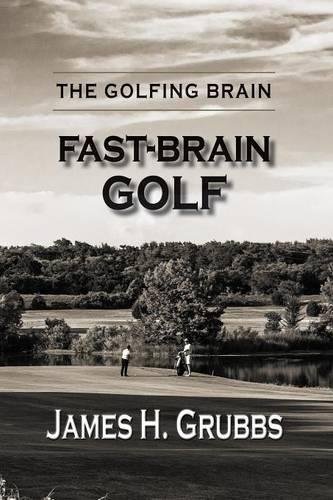 Golfers’ most essential tool is also their least understood tool: the brain.
Golfers’ most essential tool is also their least understood tool: the brain.
Golfers are of course aware that they use their brain to swing a club, plot strategy, and estimate outcomes. But most golfers know very little about how distinct brain functions promote or inhibit a satisfying round of golf. They’re unaware that they can consciously shift modes to their benefit. They operate under the false assumption that the physical and mental aspects of golf are separate elements of the game.
Without an adequate understanding of the interplay of the brain and the rest of the body, golfers can spend thousands of hours on the practice tee and still have disappointing rounds. They can buy the latest high-tech equipment and take decades of lessons, and still find themselves grinding away, hole after hole.
Golf—even competitive golf—should be a pleasant experience. It should elicit our best selves, not our worst selves. This is the guiding principle of Fast-Brain Golf. The book’s author, James H. Grubbs, is a practicing psychiatrist, competitive golfer, and golfing-brain instructor. His interest in psychology and neuroscience, and his years of golf experience, inform this practical and innovative guide to better golf.
Fast-Brain Golf does not purport to reveal “secrets” of good golf—because, as the author insists, there are no golf “secrets.” There is only adequate understanding of brain functions as they apply to golf, ongoing stroke practice, and the willingness to enjoy every round, regardless of what’s at stake.
Fast-Brain Golf is the first book in the series The Golfing Brain. The book draws from the most current research in neuroscience to explain basic principles of brain function in clear, accessible terms. At the heart of the book is a description of these two modes: fast-brain functions and slow-brain functions.
Fast-brain functions are quick, energy efficient, and automatic. Most of our daily thinking and behavior is the result of fast-brain operations. Slow-brain functions are slower, more deliberate, and are time and energy consuming. We use slow-brain function to solve problems.
After exploring these key functions, the author leads readers through ways that fast-brain and slow-brain modes apply to movement, attention, decision making, and learning in golf. He explains how to access either the fast-brain or slow-brain mode when it’s needed in various situations during a round of golf or when acquiring new skills.
Throughout this enlightening book, the author emphasizes that knowing some basic facts about the brain’s workings leads to better golf at every level of play. He debunks the maxim that “Golf is a thinking person’s game” by explaining how some forms of thinking, under certain circumstances, sabotage a golfer’s game.
Finally, the author offers several techniques and exercises for accessing these modes on the practice tee and on the course. He asserts that mastery of these techniques improves physical skills, attention, decision making, and learning—and, most importantly, it increases a golfer’s enjoyment of the game.
Publication date: October 24, 2017 (source)
Related posts
Golf Books #370 (Tiger Woods: Shortlisted for the William Hill Sports Book of the Year 2018)
on Tuesday 9, MarchBased on three years of extensive research and reporting, two of today’s most acclaimed...
Golf Books #369 (Remarkable Golf Courses)
on Tuesday 2, MarchRemarkable Golf Courses encompasses the extremes of the sport from the highest golf course...


